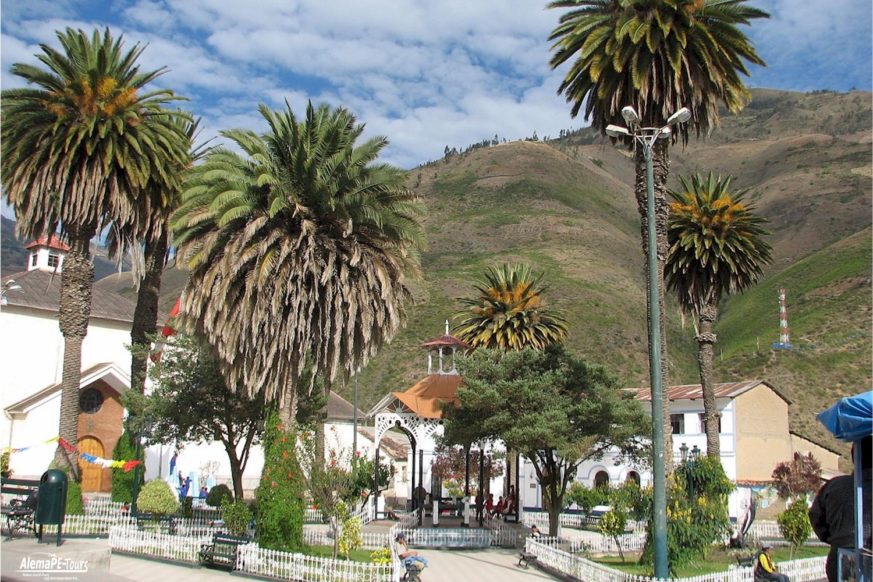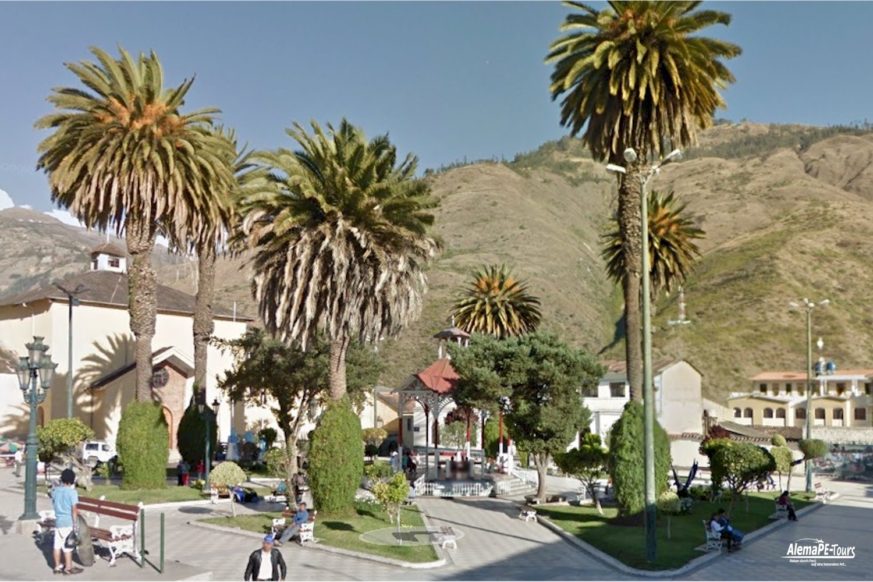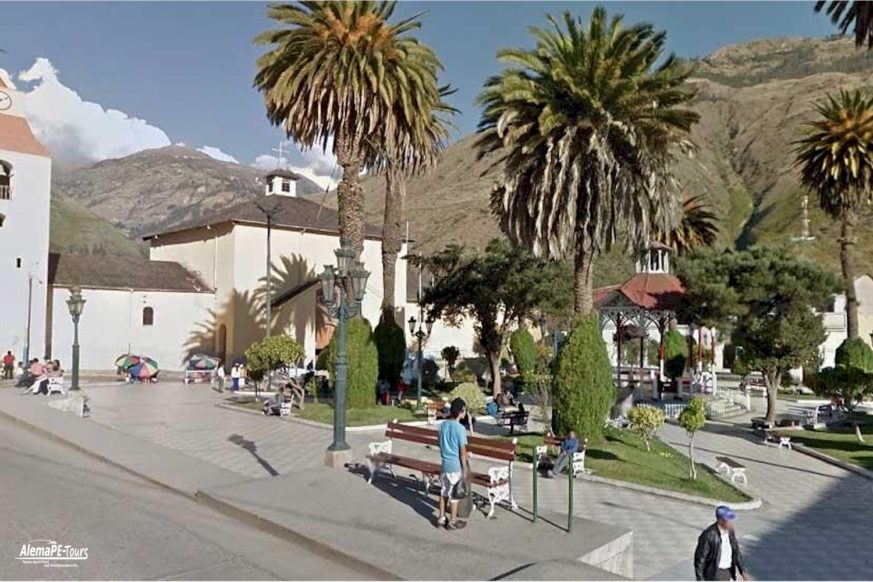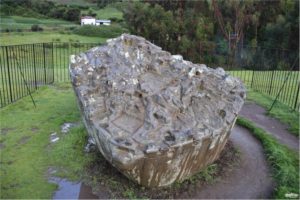Abancay
Abancay and its attractions
Abancay shows an eternal spring with its climate throughout the year. It is located at an elevation of 2,377 metres (7,799 ft) above sea level in the southern peruvian Andes, above the Pachachaca River, and straddles the Marino River. Because of its dry mountain[clarification needed] and famous year-round warm weather it is known as “The Eternal Springtime Valley”. The nearest cities are Cusco, Chalhuanca and Andahuaylas. Abancay is located at the junction of two important Peruvian roads: the Caminos del Inca Road, an old road dating from Incan times, between the cities of Nazca and Cusco, and the Via de los Libertadores, connecting Ayacucho and Cusco.
The Tourist Office is now (2014) in a place where no one will find it unless they know; there are no signs on the street but you will find it inside the Universidad Unamba at the far end of Avenida Las Arenas just past the little park called Plaza Micaela Bastidas which is opposite the tall Saywa Hotel; Open hours: Mo-Fr until about 4 pm, closed on weekends. You can also get good information and better maps at the Tourist Office in the Main Bus Station. If you are looking for guided tours and information in English you should visit Pachacamac Tours in Jr. Cusco Nr. 425 two blocks uphill from the Plaza de Armas.
History
Abancay was already a populated area before the arrival of the Incas. It was the frontier of the Quechua-Inca cultural influence area of the Chancas, an ethnic native group of Peru. Its name comes from a flower native to the region called amankay. When the Spanish arrived, they transliterated the word and named the city Abancay, Villa de los Reyes (“Abancay, Village of the Kings”), which was later reduced to Abancay, its current name. Abancay was the location of the Battle of Abancay between the forces of the Conquistadores Francisco Pizarro and Diego de Almagro. Abancay was mentioned in the first Cronicas (Pedro Cieza de León) as an encomienda dedicated to the cultivation of sugar cane for the production of aguardiente.
How to get to Abancay
By plane to Andahuaylas or Cusco
There is a nearby airport, belonging to the town of Andahuaylas. This airport is closer than Cuzco’s airport. If you fly to Andahuaylas and from there take the bus, the journey to Abancay will take 5 to 6 hours on an unpaved road. If you choose to fly to Cuzco, then from there it can take 3 to 5 hours drive by bus or a 3,5 to 4 hours drive in a “colectivo” (taxi car) to Abancay.
By bus
- Traveling to Abancay is not difficult, you will find most bus operators in Lima North, at Terminal Plaza Norte and in the center of Lima.
- As a cost for bus tickets from Lima to Abancay you can expect with 50 to 180 Soles for one direction. Prices can rise especially during the holiday season for Christmas and national holidays.
- Surely the best companies are, Expreso Sanchez, Etecsa. In the case of Etecsa the one-way ticket costs about 50 soles. Palomino or Wari, Cromotex are the recommended and also super known companies that offer their services to Abancay such as Cruz del Sur, Oltursa, Civa and others.
- All buses on the Lima-Nazca-Cuzco line pass through Abancay. You can choose between many different bus companies, that you’ll all find at the ‘Terminal Terrestre’. The roads are well paved.
- There are daily buses from and to Andahuaylas, one of the closest airports.
By car
The times when the roads were in bad condition are thank god over. The roads are well paved. Only during the rainy season are the roads again and again impacted by precipitation, smaller accumulations of stones, especially in the morning hours.
Interesting Points
The Carnival is the town’s main celebration festival. It is famous as one of the best Peruvian ethnomusical festivals. It takes place from the last week of February through the last week of March. The comparsas contest and Yunsa games, with people dressing in local traditional costumes, fills the streets of the city. Every social group, from market vendors, students, government officials, teachers, etc., participate in the games which also have the support from the local and regional government due its cultural relevance.
Plaza de Armas of Abancay
This place is one of the main attractions of the city of Abancay. Although it is certainly not the largest in Peru, the visitor feels right at home due to the prevailing climate. On one of its sides is the church of the Señor de la Caída, as is the case in many other cities.
Abancay Cathedral’s Bells Tower
There is a traditional tale about the foundation of the city recorded by Guillermo Vidalegut, a local journalist, in his book “Alma y Rostro de Abancay”, who, inspired by Ricardo Palma’s Tradiciones Peruanas, gathered local traditional stories. As the story goes, during colonial times, the town was located above the valley, in one of the skirts of the Ampay mountain, in a place which is now known as Ccorhuani. One day, the statue of the Virgin Mary known as Our Lady of the Rosary, Patroness of the village, mysteriously disappeared from the local Church. The people, fearing robbery and claiming sacrilege, searched day and night until a shepherd found the statue standing above an immense boulder by the valley. The people believed that the thieves had left the statue in fear of being discovered by the search parties. The statue was returned in a procession back into town. A few weeks later, the same disappearance occurred again and another search ensued. The statue was again found in the same spot where it was found before. Lo and behold, the disappearance happened a third time. The people never understood why or how this was happening. Finally, it was suggested that maybe the statue was asking for a shrine in the valley at the location where it was being found. The town then built a small Chapel there, and it became a place of constant visits by the people. Before long, it became the center of activity, and the entire town was moved to where is located today. The statue of Our Lady of the Rosary still sits above the immense boulder which is located on the right side of the Cathedral.
Uspaccocha Lagoon, at the National Wildlife Sanctuary of Ampay
The city’s surroundings have some astonishingly beautiful landscapes, such as the Ampay National Sanctuary, a wildlife sanctuary and a frontier within the Andes, and the Clouded Forest of the Amazonian Basin, located north of the city where the mountain called Apu Ampay (the Lord of Ampay, in the indigenous cosmology) is also located. Apu Ampay reaches heights of approximately 5,300 meters above sea level. There are also cave paintings, meteorite crash sites, lagoons, waterfalls, wildlife, orchids, and the famous Intimpa tree (a unique tropical conifer preserved by an effort led by the World Wildlife Fund) constitute a few of the attractions that nature lovers will find.
Some of the Choquequirao structures
The Pachachaca River is famous for its colonial bridge and its rapids where canyoneering and whitewater kayaking can be practiced. It is one of the best and longest Peruvian locations for this. Remains of The Pachachaca State, an important producer of sugar and brandy during colonial and republican times, is now one of the major attractions of the city.
Pachachaca Colonial Bridge, Abancay
The Saywite Archeological Site, a famous temple and adoration center dating from Inca times, is located a few kilometers from the city. Therein is the world-renowned Saywite Stone. The stone is a roughly spherically-shaped monolith that has a representation of the Inca world. It suggests that the Incas had a much better understanding of astronomy than Europeans gave them credit for. There is Taxi service from the city.
The Konoc Hot Springs (Cconocc, in Quechua) is a resort located a few kilometers from Saywite and is one of the best places in Peru to enjoy thermal baths from volcanic waters. It is claimed that regular baths in the springs can cure arthritis, asthma, and psoriasis.
Abancay is the gate to the Inca city of Choquequirao, next to the Apurímac River, which is considered as important as Machu Picchu. There is evidence that the real dimensions of the city are much larger than what has been uncovered, excavated and studied until now.
Hacienda de Illanya
This farm is one of the first haciendas of the colonial era and is considered one of the most important buildings of this period. Its elegant french architecture and shape as an “L” was built on two layers of clay, limestone and stones. For many years, a sugarcane brandy was produced here, as well as chancaca and pipe honey. In 2006 the property was restored. It is now the seat of the Archaeological and Anthropological Museum of Apurímac. The Hacienda de Illanya is located about 5 kilometers from Abancay and can be reached in about 15 minutes.
Hacienda de Yaca
The origins of this hacienda are estimated by historians to be around 1609. The hacienda distinguished itself for years by its sugarcane production, which served as an input product for the industrial extraction of the liqueur. The construction is European in style and is characterized by a triumphal arch and a large square with the beautiful chapel of Yaca. The Hacienda of Yaca is about 40 kilometers from Abancay.
Recreational and Ecological Park “Mirador de Taraccasa”
This park is the ideal place to admire the panorama of the city of Abancay in all its glory. At the highest point is a huge cross that represents a symbol of protection. The park is considered one of the resting areas of Abancay. In addition to various activities, artistic events are offered here again and again. The park is about 10 kilometers from Abancay.
Sayhuite – The Stone of Sayhuite
The secret behind the huge stone
The ruins of Sayhuite in Peru are hardly explored until today. Special attention is attracted by a large enigmatic boulder that has carved out landscapes, houses, irrigation dikes and fields. Some researchers consider it a kind of map of the Inca Empire, while others suggest it could be a cult object for a religious or ceremonial act. The unique boulder called “Piedra de Sayhuite” (English: Stone of Sayhuite) is located approximately. 47 km east of the Peruvian city of Abancay, amidst the 60-acre archaeological site of Sayhuite (also called Saywite).
It is made of granite, has a circumference of 11 meters, a diameter of 4 meters, is 2.5 meters high and weighs 32 tons. Its upper surface features over 200 complex finely carved images of llamas, turtles, lizards, monkeys, pumas, humans, as well as buildings, staircases, and canal-like depressions that begin at the highest point and run all the way to the edge of the stone, opening into holes. However, it seems that the way of the water was changed by the subsequent addition of material. Up to now, our scientists do not agree on sense and purpose and age, and some see it as a religious artifact, while others see it as a ritual and ceremonial object for the worship of water. But there are also experts who recognize in it a three-dimensional relief map of an ancient city or dominion of the Incas with the wildlife living in this region.




